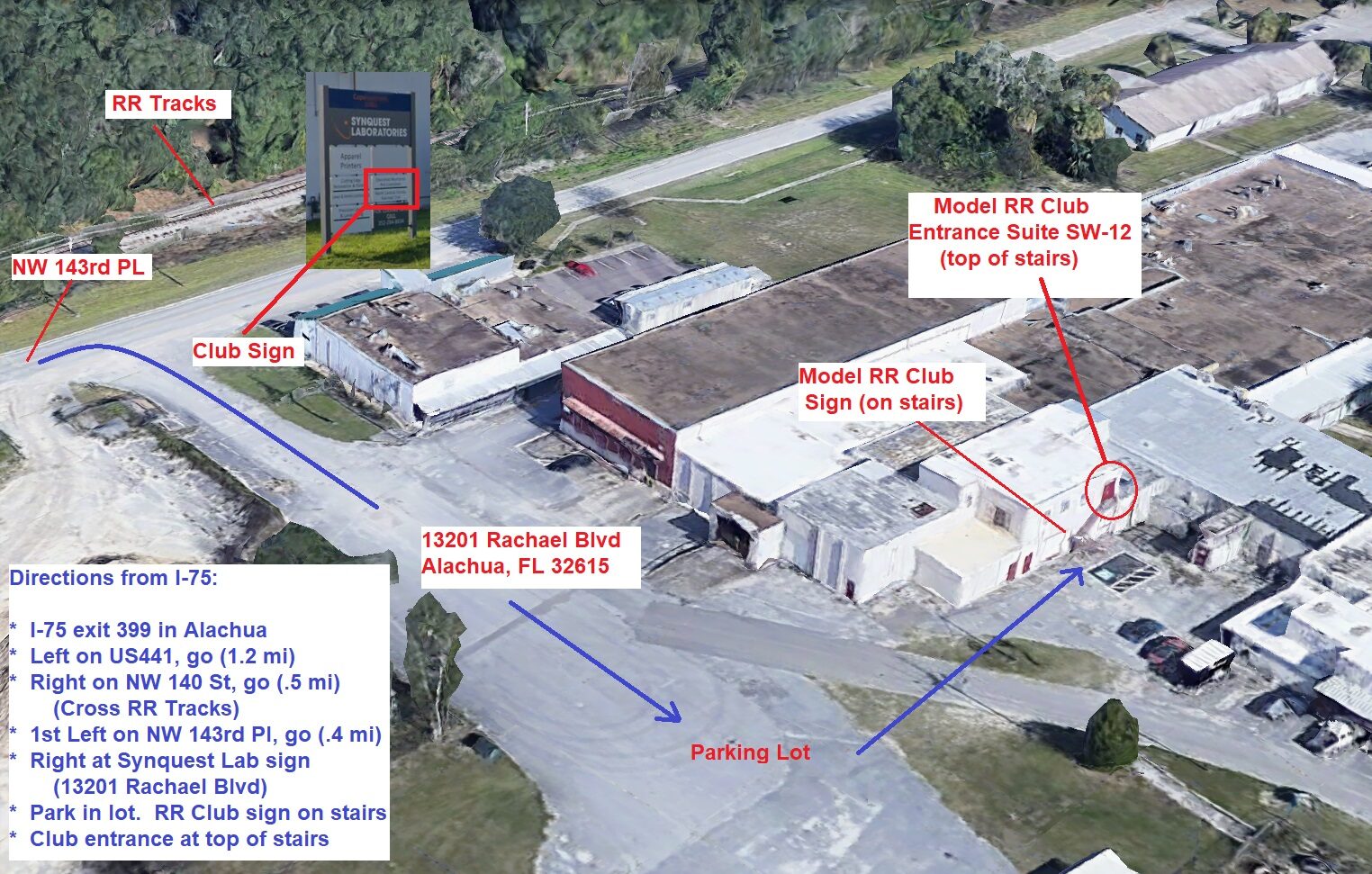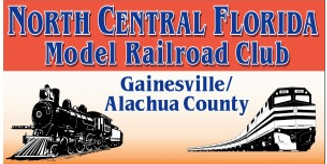about us
Sharing Experience and Enthusiasm for the World’s Greatest Hobby!
The North Central Florida Model Railroad Club, Inc. is a not-for-profit corporation functioning as a professional educational hobby Club. It operates exclusively as a tax-exempt corporation within the meaning of Section 501(c)(3) of the US Internal Revenue Code. We’ve organized to:
Construct and operate scale model railroad equipment, layouts, modules and exhibits;
Train and educate Club members and the public in the skills involved in scale model railroading;
Promote general fellowship and personal contact among and between all scale model railroaders and members of the Club;
Provide a forum and/or sponsor technical clinics for the further education of the Club members, the public, and organized youth groups;
Exchange ideas and techniques in connection with the hobby of scale model railroading as well as the preservation of Florida’s railroading heritage;
Participate in public venues, train shows, swap-meets and joint modeling meets with other Clubs by displaying and operating Club modules separately and in conjunction with other Clubs; and,
Assist Club members and other railroad modelers to build, maintain, operate, upgrade and modify their home layouts and/or model railroad equipment.
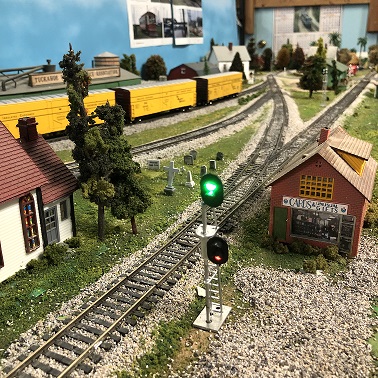
The Hobby: a Quarterly topic
Design Your Dream Model Railroad!
Tips, Tricks & Pitfalls & Ideas To Help
Create Your Dream Model Railroad
“What does it take to build the model railroad of your dreams?”
Oh, that’s simple — Have A Dream! Most layouts start with an idea of how much fun it would be to have a miniature railroad modeled after a ‘place in time.’ Maybe that ‘place’ is from a childhood memory, perhaps a trip by rail, a vacation snapshot, or a historical place.
Whatever you choose is OK because after all ‘it’s your railroad,’ build the one YOU like the most! With that decision made, the next step is to consider the space available for this dream layout. Of course, you need a large space, right? Not necessarily! Consider the space you have verses the train size (scale) you like. If you really like Lionel trains but don’t have a garage size space, maybe a smaller switching yard would work fine.
If your dream layout is set in the mountains and your space is limited, maybe selecting smaller N-Scale trains would work best. If larger scale trains are your interest, how about a garden railroad? There are many options to choose from.
Once the train scale is determined, the next step is size up the situation; that is, determine how much of the dream layout can be displayed in the space you have. It may be that only a partial scene is possible… that is OK! Pick your favorite scene and start designing from there.
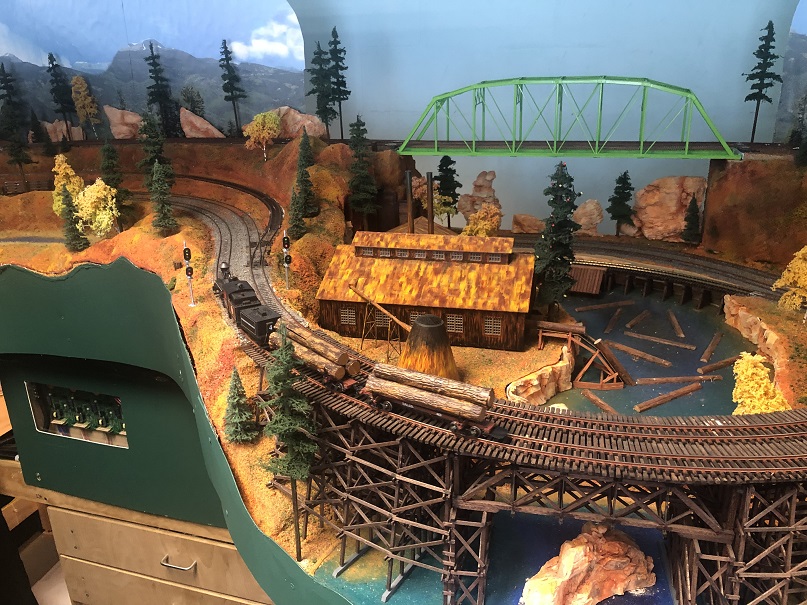
Dream It — Plan It — Build It
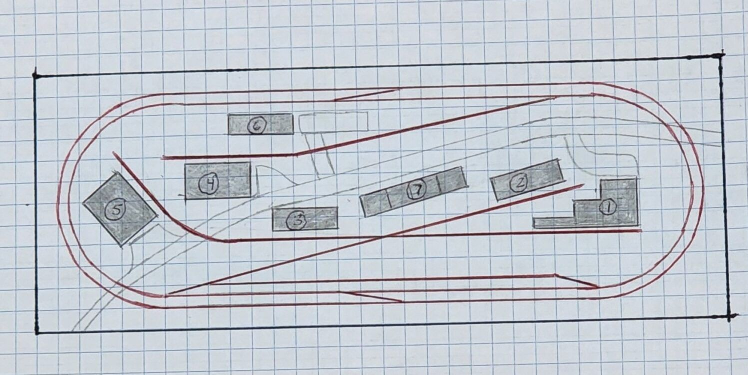
A pencil and paper may be all you need to begin the design. Draw a simple 2D sketch of the layout scene you wish to model. In addition to train tracks, include buildings, roads, rivers, mountains, tunnels, and bridges. You don’t need to be architect…just a basic outline sketch is fine.
To refine a sketch, you may consider using a software program for either sectional track or flexible track. There are some ‘free’ track design programs available, such as JMRI.org, which allow for very accurate track laying measurements.
Some design programs like ‘3 rd Planit’ software feature 3D track designing, including terrain contours and train simulations. Such programs, while not free, are very complete and often used by professional model railroad builders. There is a learning curve to such programs, but they offer very realistic 3D layout designs and operational functionality. It’s better to have an accurate layout on paper or computer before attempting to build roadbed and lay track. This can save hours (and dollars) when changes need to be made.
Sketch It — Refine It — Measure It
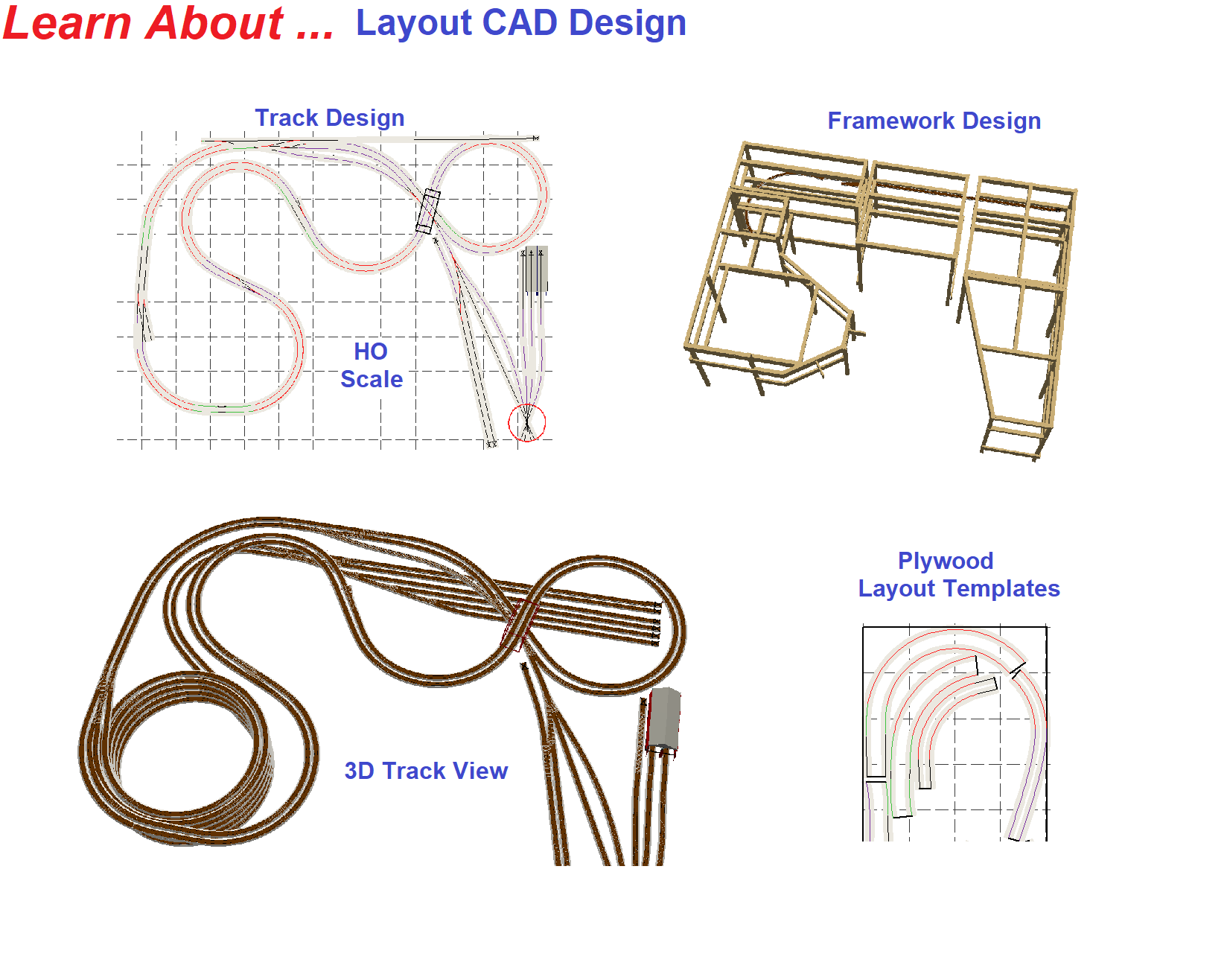
Location — Location — Location
“Can I start laying track now?!”
Not yet. With your basic design drawing complete, it’s time to think about electronics…I know, that’s a scary thought for many modelers! But, planning for wiring and electrical components is important. Train control and track switching panels often need to be designed. Locations for electrical hardware such as turnout machines and controllers, train detection, boosters, and signals need to be planned ahead of time. It saves time and frustration in the long run.
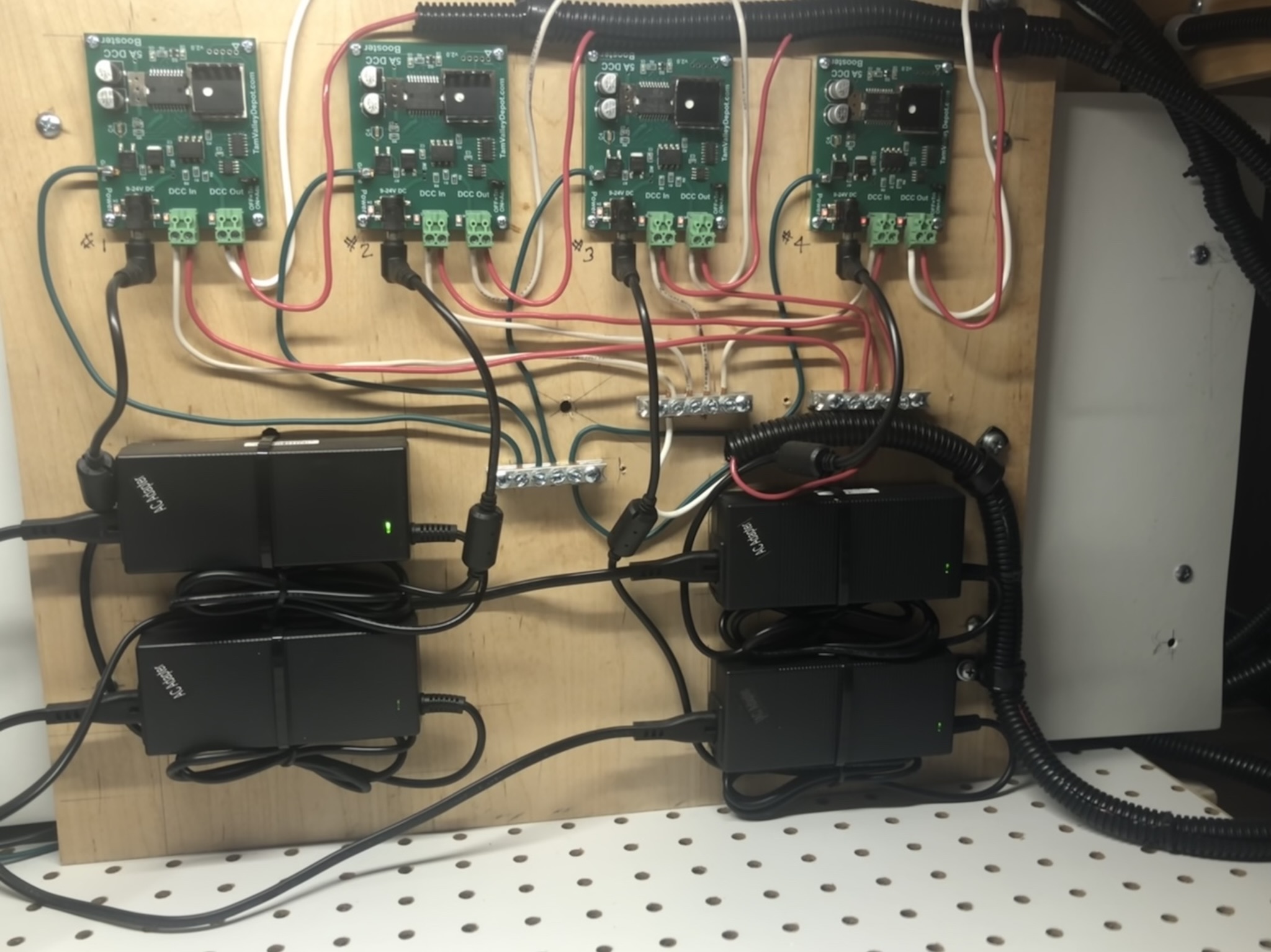
Pictured is a DCC signal booster panel board
‘OK, NOW it’s time to lay some track, right?”
Almost…but there’s another design step to consider:
Accessibility and Intended Use.
If your dream layout is larger than 3 ft. x 5 ft., have you planned for access to all track areas? What if a train derails inside a tunnel, behind a mountain, or between buildings? How about track cleaning? Can you reach all tracks sections for hand cleaning? Are all track turnouts and electrical hardware accessible? If the answer is ‘No’ to any of these questions, then access panels and/or space around the layout must be planned.
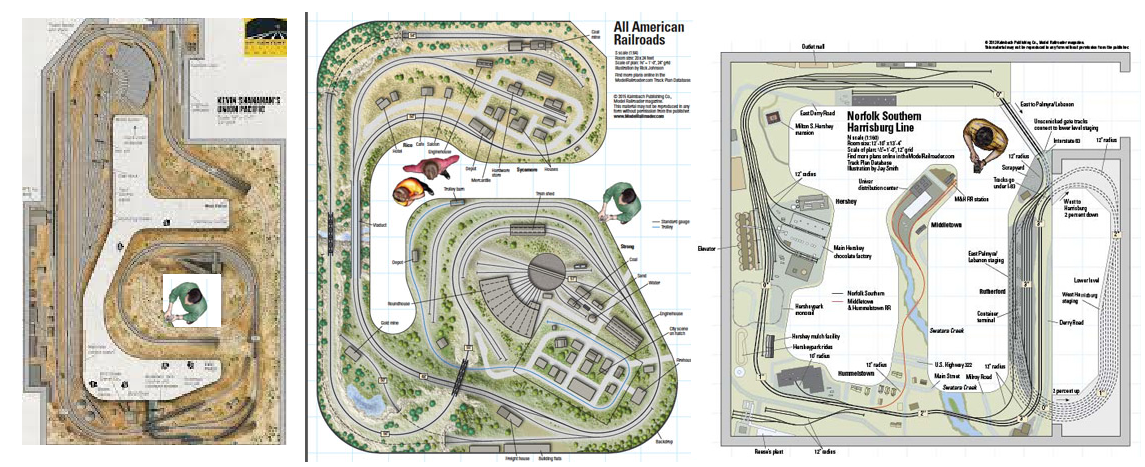
How do you intend to USE your layout? Is your dream layout going to be permanently mounted in place? Or, will it have to be moved for operation and storage? If your layout needs to be moved to be operated, it will need wheels! Maybe it needs to be stored under a bed or up against a wall. Then, the legs will have to be retractable and have wheels. One modeler had only the space above his garaged car for storage. So, he created an electric hoist mechanism and, with one-button, the layout could be quickly stored away!
There are other factors to consider before you start building your dream layout. One piece of advice is to have patience, plan each step, then proceed with each step.
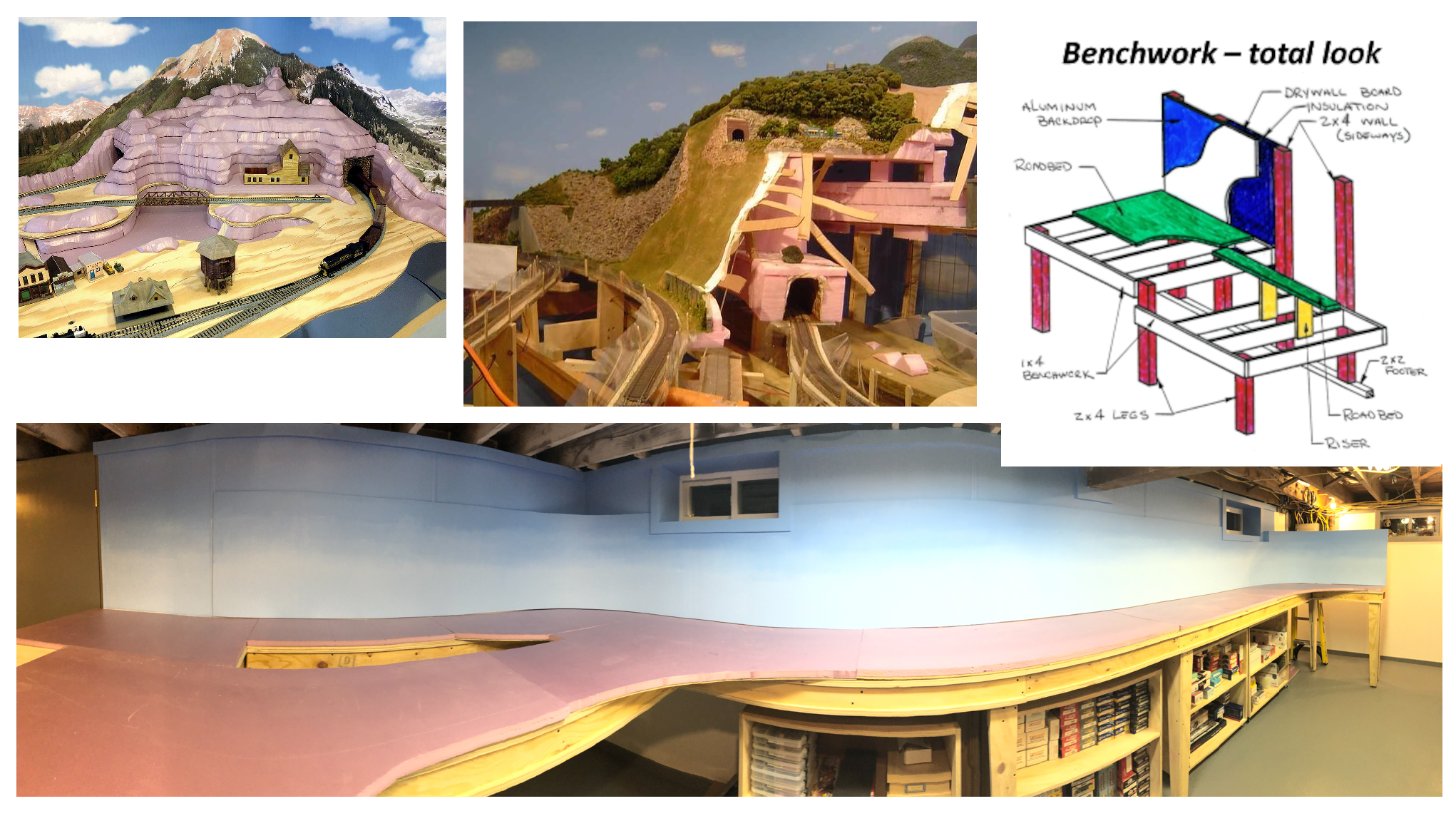
Another key feature for layout realism is planning for a backdrop picture of some kind. Backdrops of sky and clouds add depth to a scene and help the terrain to ‘pop.’ There are sources available to purchase all variety of backdrop scenes. However, you can easily create you own backdrop scene of sky and clouds using spray paint and cardboard cloud templates. You don’t have to be an artist to do this!

“OK, can I start laying track now?”
Not just yet, there are a few more design features to consider: water, rocks, and trees!
Many dream layouts include water scenes such as rivers, streams, lakes, and waterfalls which must be planned ahead of time. These may require a base structure lower than the terrain to ‘look realistic’ in the scene. Usually, foam or plywood panels are cut to shape and mounted slightly below the surface. These are painted in desired water ‘colors’ and covered with a liquid resign to represent water.

Rocks add another level of realism to any terrain scene. Rocks can be carved from foam board or cast using plaster in latex rock molds and glued in place. Using acrylic paints, these rocks can be colored using a brush ‘stabbing’ method — where various colors are stabbed into the rock faces in a random pattern. Again, you don’t have to be an artist to do this!
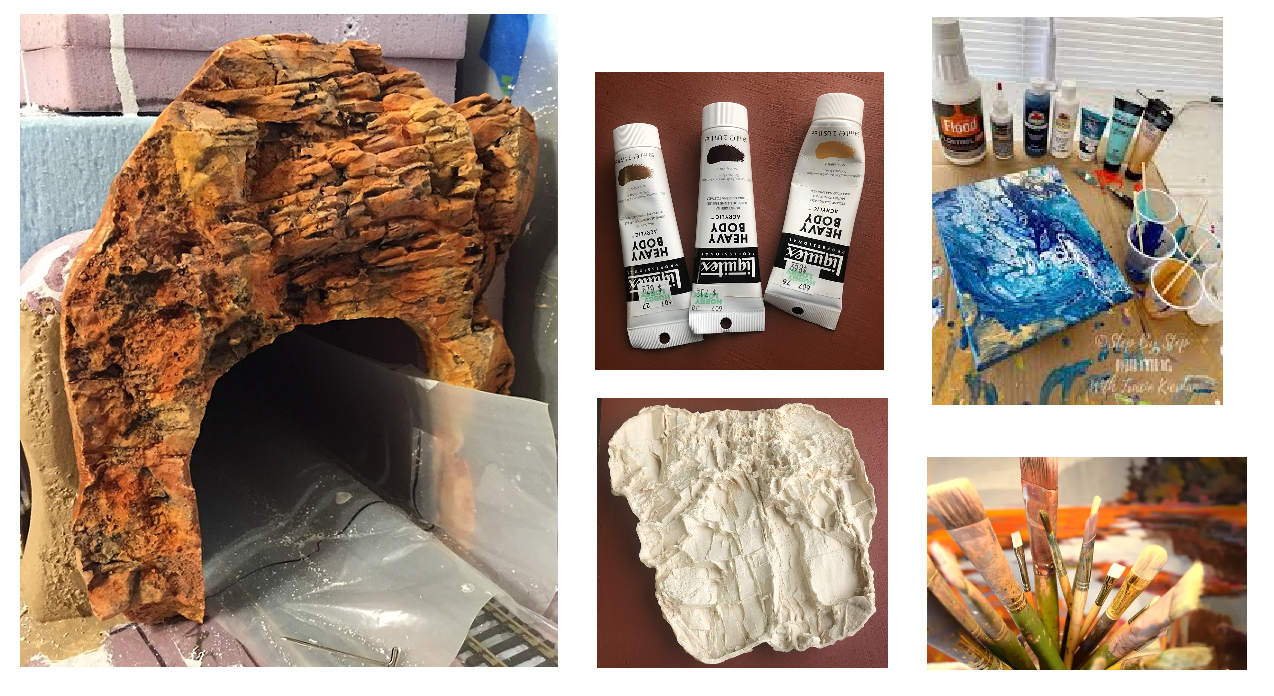
Trees are found in most model railroad scenes. Trees of all types can be purchased from many online suppliers. But again, you can make your own trees! Pines can be made from wooded dowels, tapered on one end, painted brown, with layers of thin filter material shaped, painted green, covered with foam flocking colors, then slid onto each dowel. Other tree types can be made from fine twigs or wire, painted and flocked in desired ground foam colors.
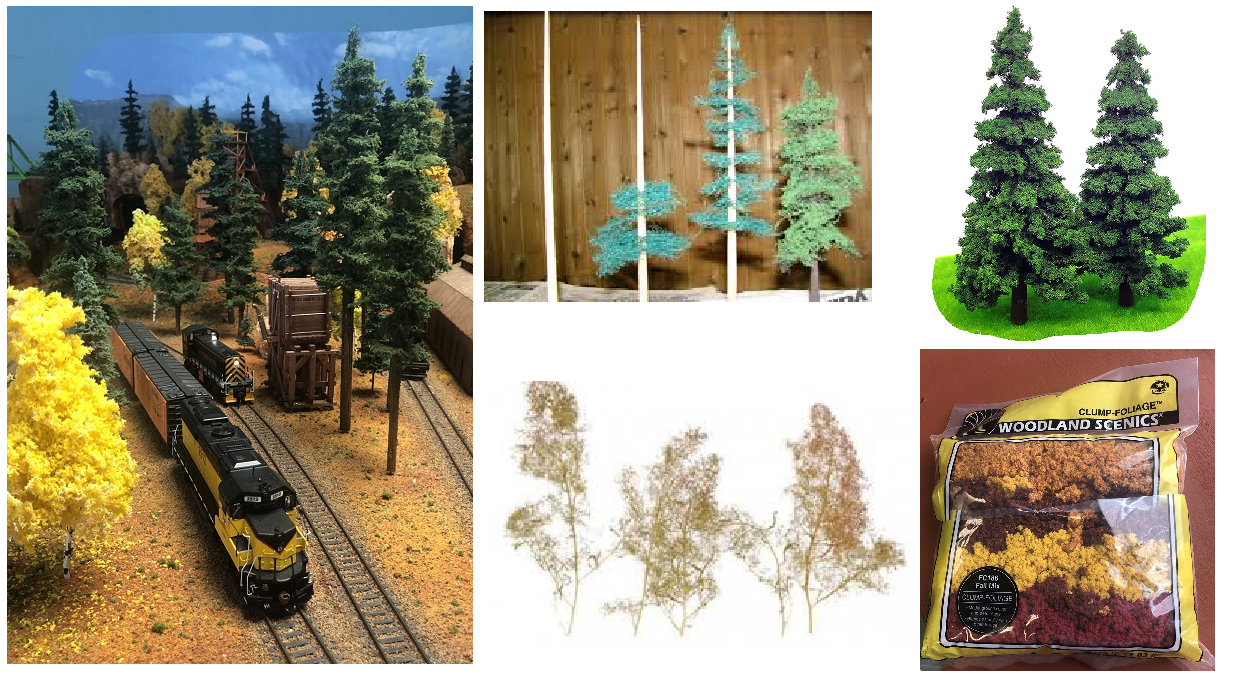
“Where can I learn more about this?”
There are many excellent resources available about building model railroads. One of the best is YouTube.com
Just about any model railroading skill or technique is available on video at YouTube. Whether you need help with design, carpentry, track laying, soldering, wiring, electrical hardware, Digital Command Control (DCC), scenery, backdrops, or train operations, YouTube has it all.

Another good resource is the free online magazine ‘Model Railroad Hobbyist (MRH)’ Here you find many advertisers of products and services within the model railroad hobby. In addition, each month MRH features industry news, calendar of events, and in-depth ‘how to’ articles about model railroading projects. There are also books available for sale on many subjects from ‘Reliable Train Operations’ to ‘Using Digital Command Control (DCC). MRH is a great resource for everyone interested in model railroads, regardless of your experience.
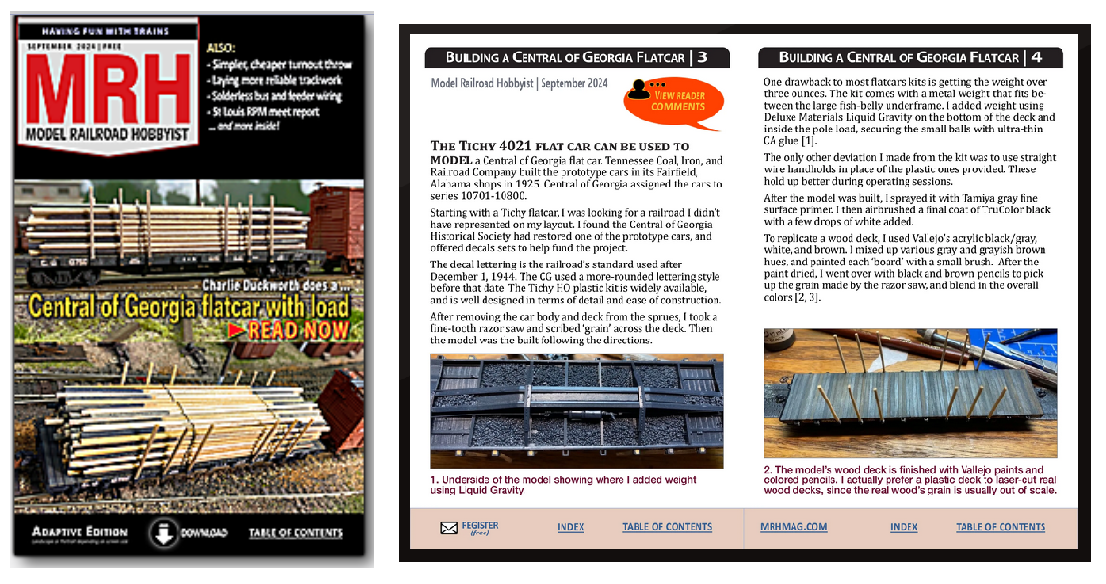
Finally, after studying, planning, sketching, and building bench work…
You are ready to
LAY SOME TRACK!!
Take A Tour!
Welcome to the North Central Florida Model Railroad Club.
We’re glad you stopped by for a virtual visit!
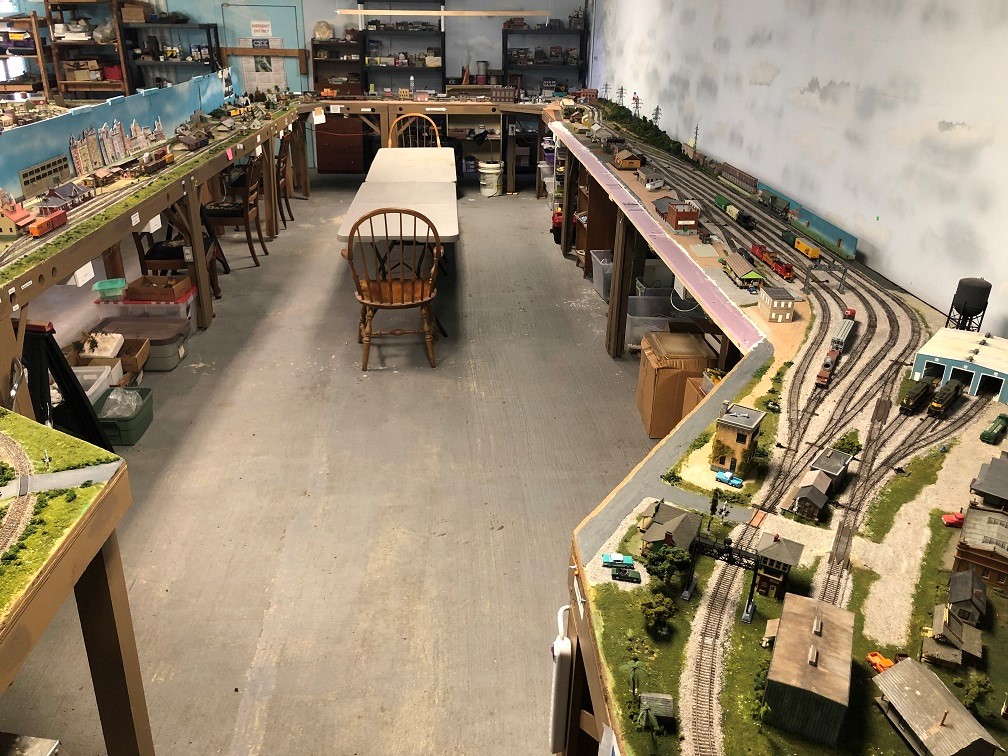
Pictured above is the eastern side of our main HO layout. It features towns and industries around our home base of Alachua, Florida. During a recent open house, one visitor exclaimed “Hey, I recognize that little building! I know exactly where it’s located!” Such is the case for many structures on our layout as they were modeled from photos of original buildings and track side settings. A large train yard can be seen on the right. It plays an important role in our latest club activity—Prototypical Railroad Operations.
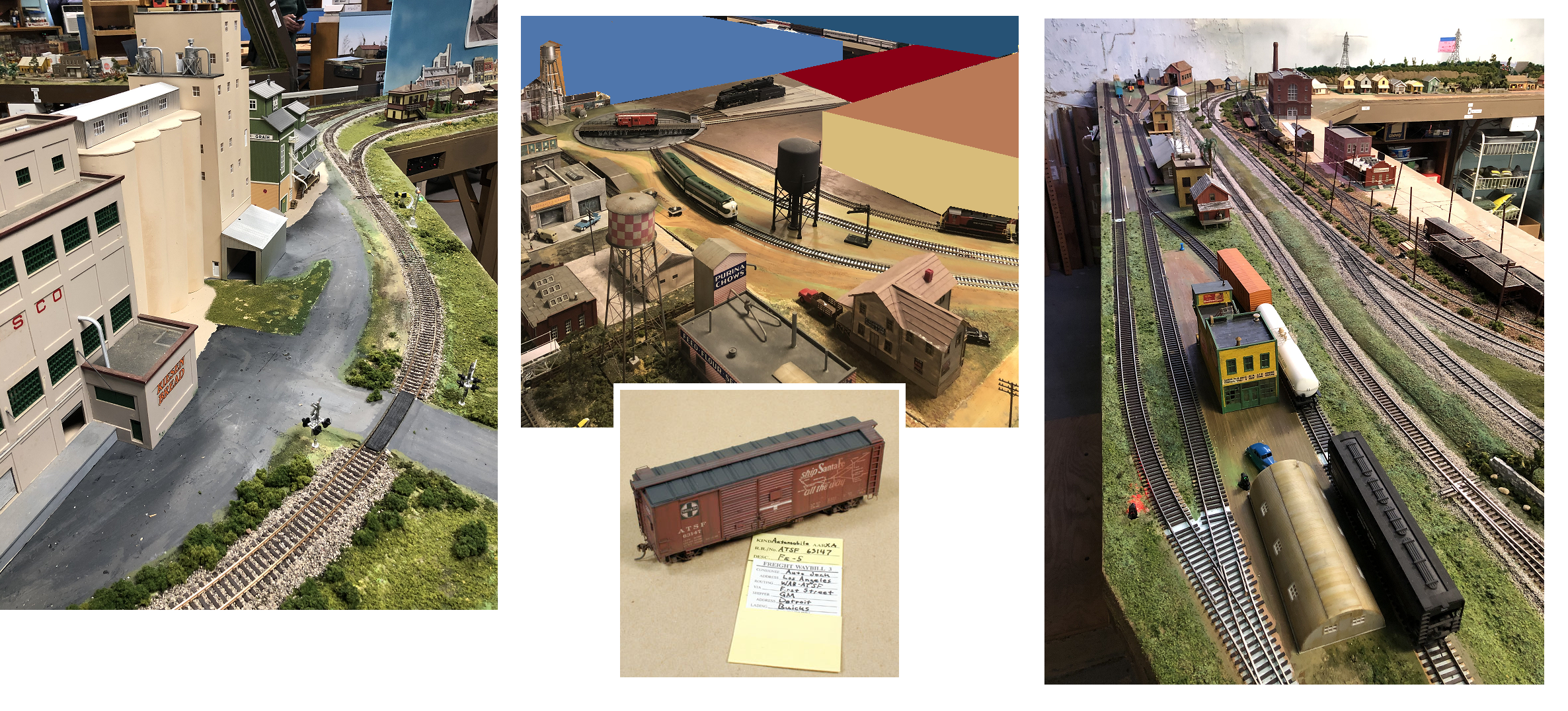
Members are learning how to build trains in the yard according car manifests. They then move those trains to various towns and industries according to Dispatcher schedules.
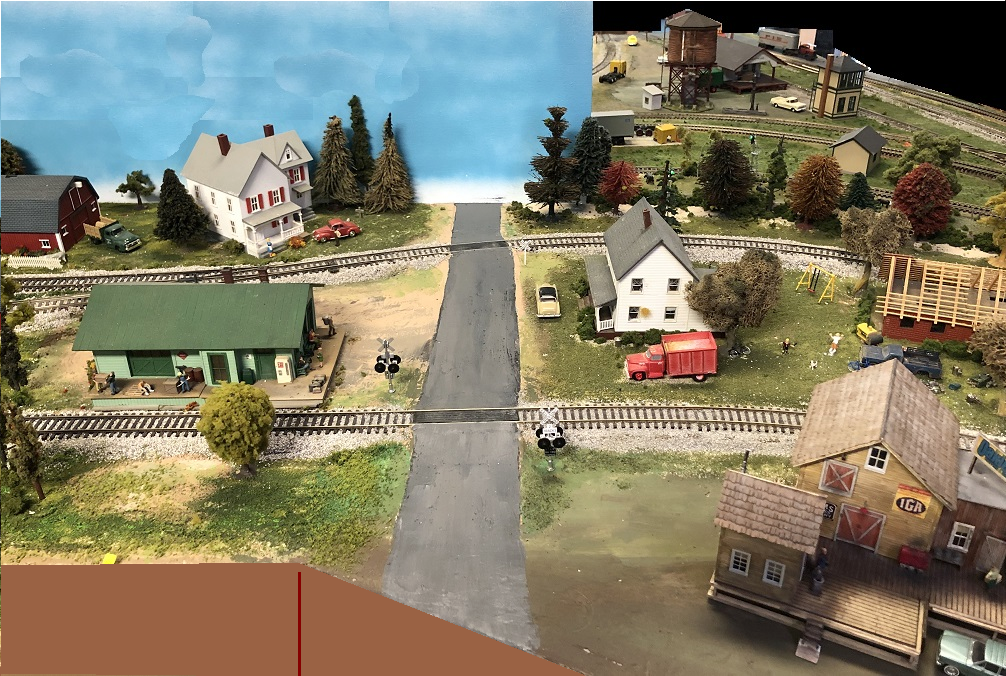
Trains moving around the main layout travel through small towns and rural scenes as they head toward their destinations. Look closely, you will discover incredible details of everyday life as the trains pass by.
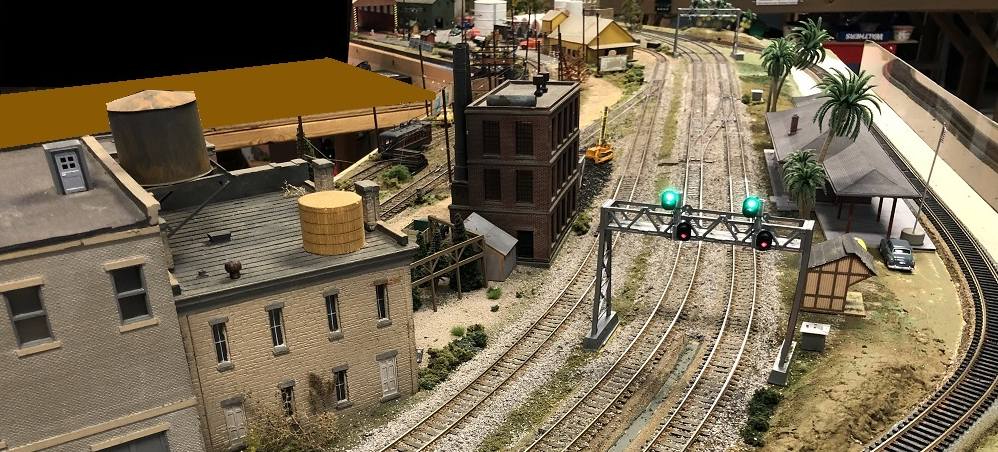
A dual track main line keeps freight and passenger trains moving at speed to maintain their schedules. Engineers must be vigilant when approaching the many operating signals. These signals will change from green to red quickly if a turnout is thrown against oncoming traffic.

As a step back in time, passengers may ‘take the trolley’ if they wish. Both old fashion and newer interurban trolleys are available for boarding in three different locations. A dedicated trolley layout is being completed which will feature 1950’s trolleys using overhead electrical wires for power. Just like the old days!
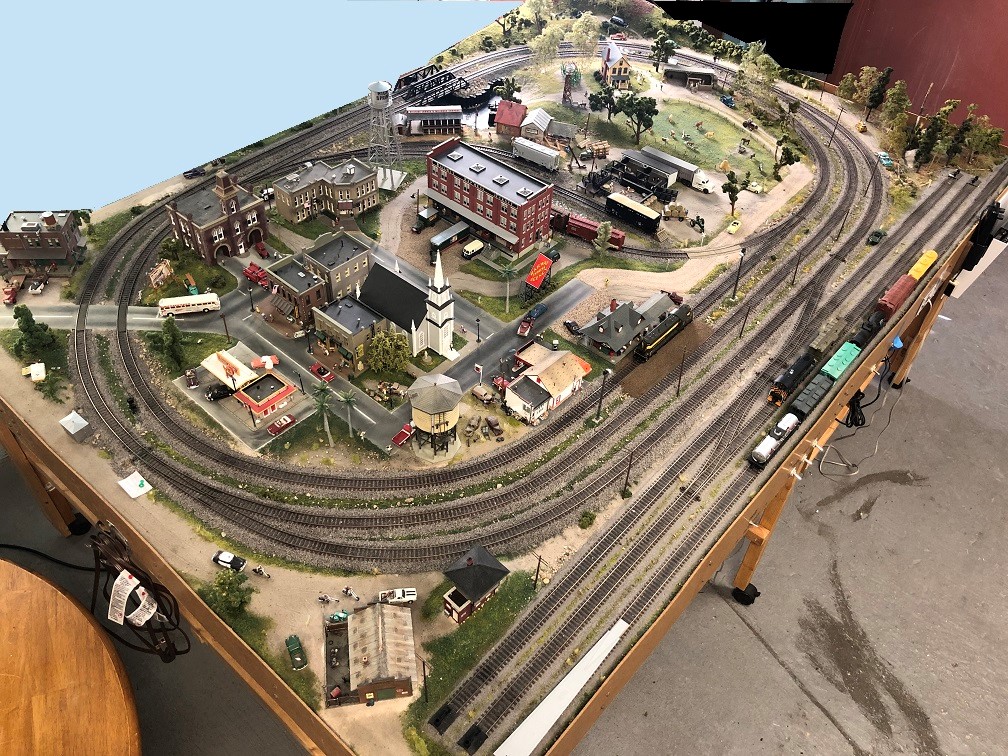
Thanks to a generous donation from Mr. T.D. Clark, next is a very nicely built and highly detailed HO layout. Flip one toggle switch and the entire layout comes to life with numerous lights illuminating buildings, signs, and streets. Seeing is believing!
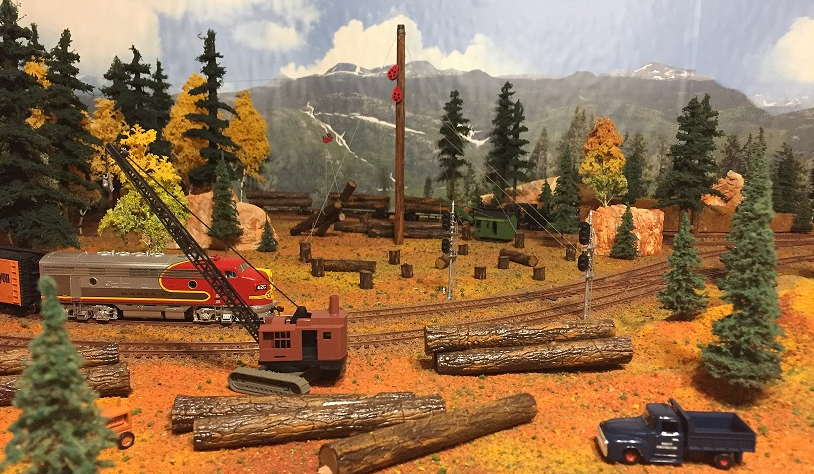
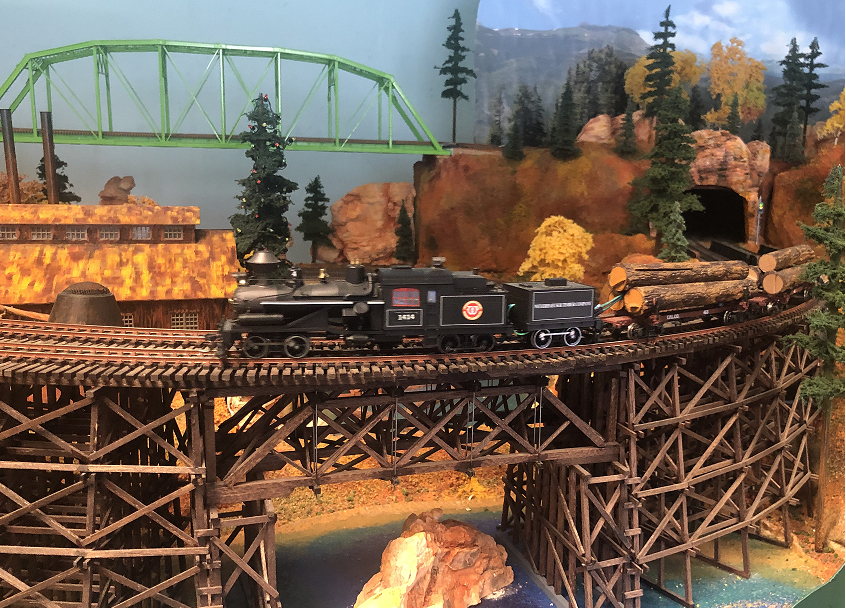
Take a mountain journey and experience an HO logging operation in action. Operated by computer, 10 trains run simultaneously through tunnels, across bridges and over trestles to deliver their logs to the saw mill. Peek through windows and see hidden trains!
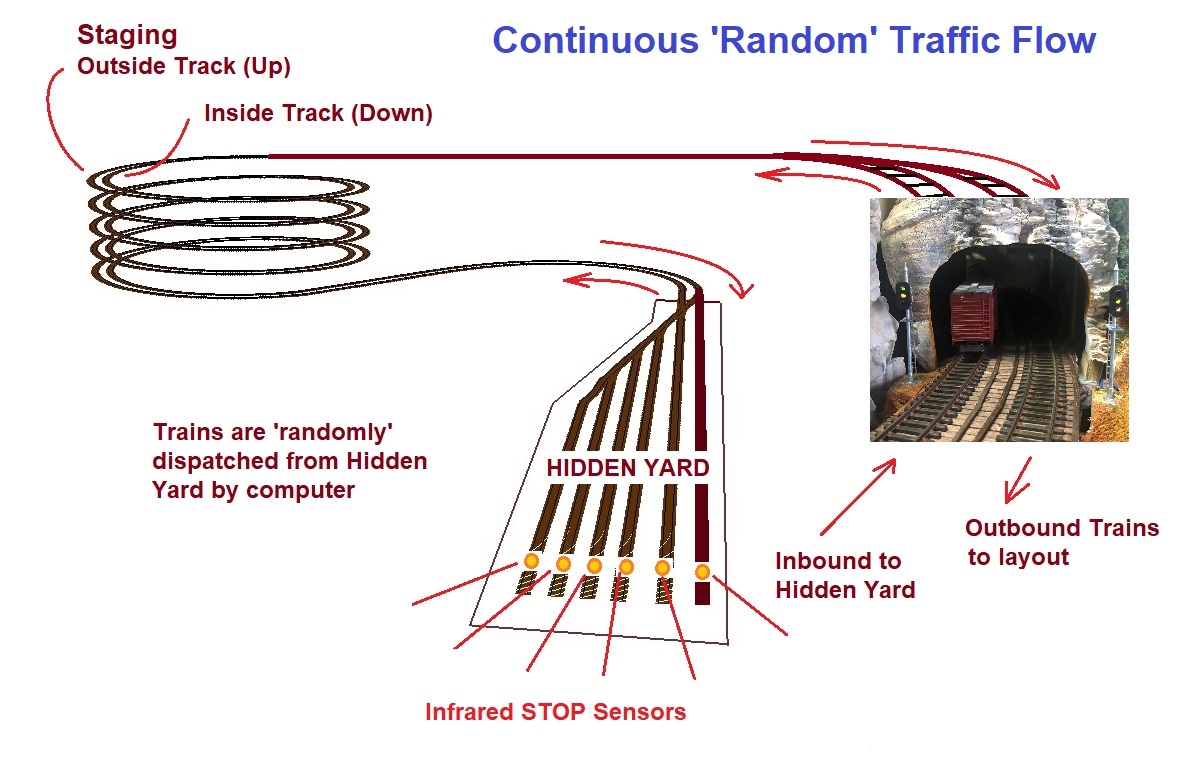
Watch the computer screen control all train traffic to avoid collisions! Trains run continuously on random schedules so that different trains travel to different places – just like a real railroad!
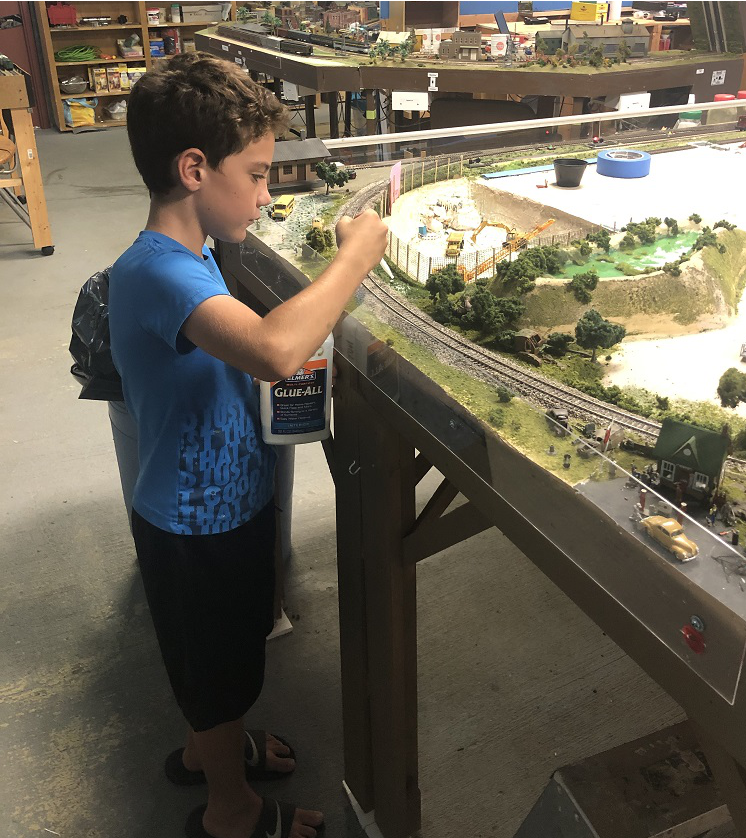
Members work together to accomplish various tasks which range from track cleaning to scenery applications. We offer individual and family memberships. We gladly share our collective knowledge to assist new members in reaching their model railroading goals. Shown above is a new family member applying scenery.
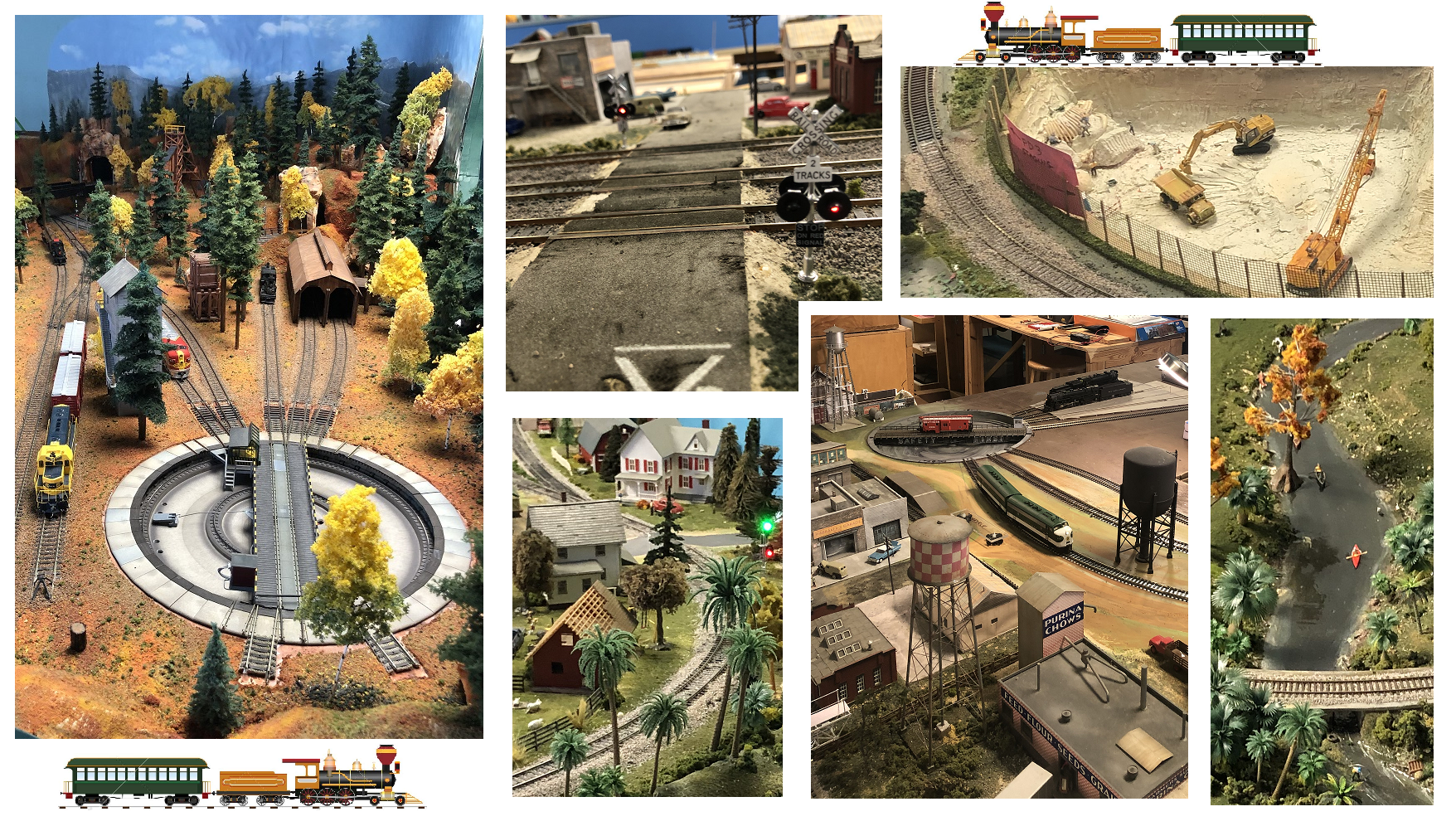
From turntables to towers to trolleys, there is a lot to experience when visiting our club. Check it out!
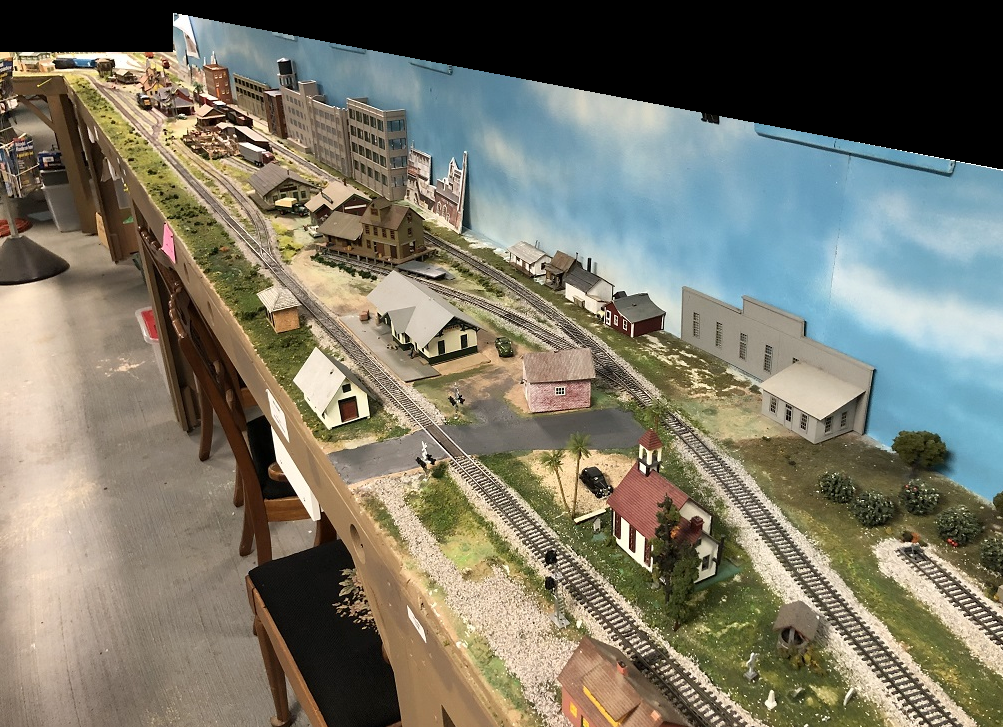
Thanks for taking this brief layout tour of the North Central Florida Model Railroad Club. We invite you to visit us on Sundays from 12:30 to 3p.m. when we are open to the public. All ages and experience levels are welcome! Directions to the Club are listed on this website.
Drop by and say “Hi!”
Note: We are located on the 2 nd floor which is accessible by external stairs only – no handicap access is available. Youngsters under 18 years of age must be accompanied by a responsible adult.
Traveling Trains Project
“We Bring The Trains To You!”
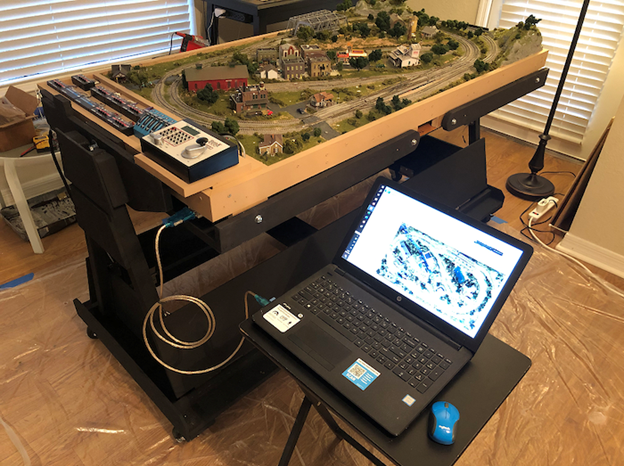
The North Central Florida Model Railroad Club (NCFMRC) is announcing a new program to bring operating model trains to your organization, school, or group event in Gainesville and Alachua County! This program features a computer-controlled model train layout that functions just like a real railroad! The presentation includes a PowerPoint examination of today’s model railroad hobby, live model train demonstrations, a ‘Yard Switching’ puzzle, and NCFMRC Club information.
The Traveling Train Layout project was developed to promote the model railroad hobby and introduce our club by bringing model trains to interested schools, organizations, and groups in our community.
Designed, built, and donated by Joseph Ward, the ‘Traveling Layout’ features small (N-Scale) trains, full landscaping, and highly detailed scenes. Various skills such as basic woodworking, electrical wiring, soldering, gluing, and painting were used in its construction.
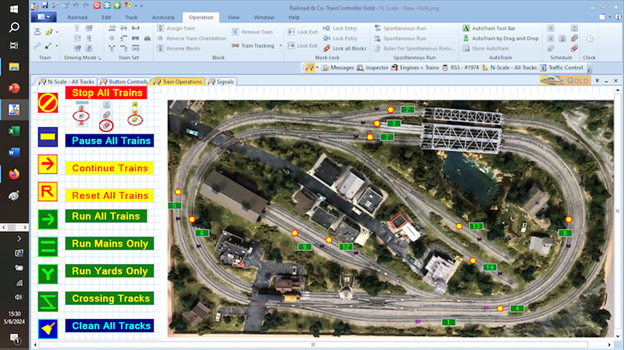
A computer runs all trains automatically according to schedules. Various train signals are located along the tracks and illuminate with red, yellow, and green lights. As in ‘full-size’ railroads, these signals control train traffic to provide for safe operations. Diesel locomotive sounds can be heard as trains navigate around the tracks.
As shown above, the computer displays a user-friendly screen to operate all trains. Choosing any colored buttons will cause trains to move around the layout. You can also push one button … and ‘Run’em All!’
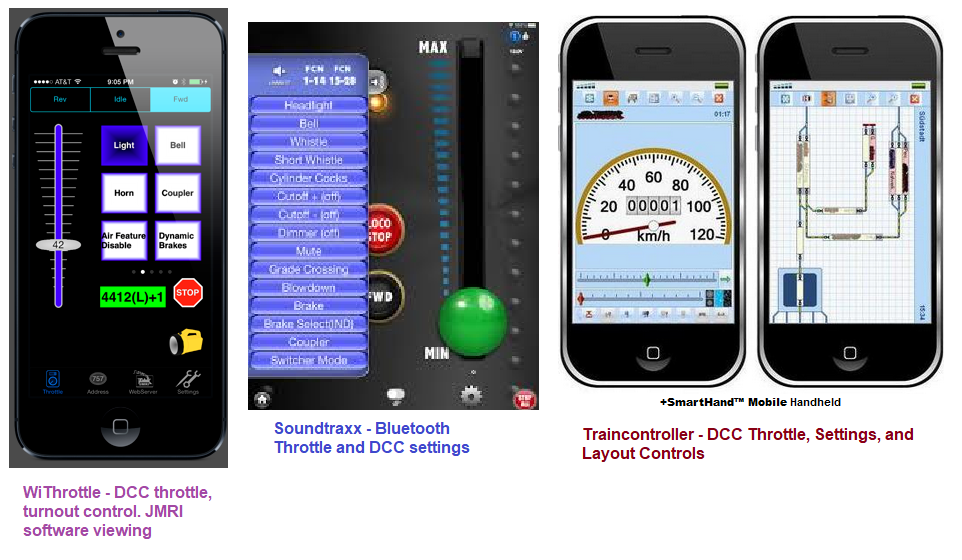
Trains can also be operated via cell phones! Using a variety of phone apps, wireless control can be established to operate trains either manually or via computer! The train software screen and all its features can be displayed
on a phone. It’s like magic!
We offer a selection of presentations for various age groups and interests. Examples are: ‘STEM’ (Science, Technology, Engineering, and Math — for Middle or High School students), ‘How To Build Your Own Model Railroad’ (12+ years), ‘Technology Of Today’s Model Railroads,’ (16+ years), ‘Railroading Merit Badge’ (Scout Groups), ‘Having Fun With Today’s Model Railroads’ (all ages).
For any group, organization, middle school, or high school wishing to have the Traveling Train Layout visit their facility or upcoming event, please enter a request in the ‘message’ section of ‘Contacts.’ There is no charge for this program. (*)
To learn more about model railroading, watch trains run on our many layouts, or just ‘talk trains,’ check our website for club times and directions. All are welcome!
*NCFMRC is a non-profit 501c3 organization. Tax deductible donations are accepted.
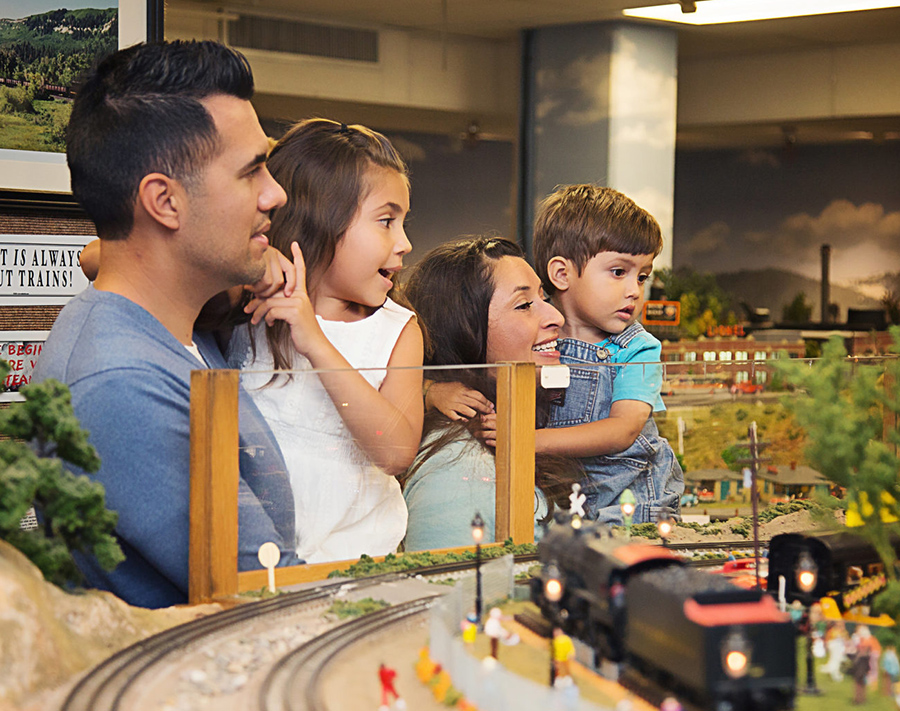
Membership
The model railroading hobby has been experiencing a renaissance over the past few years, and for good reason. Unlike the virtual worlds of video gaming, model railroading is a “hands on” hobby that teaches a variety of disciplines to enthusiasts. From geometry to carpentry, basic electrical and electronics skills, to model building and crafting, painting and airbrushing, and now even programming skills, there’s so MUCH to be learned and enjoyed by most everyone in the family.
While many of us continue to enjoy the nostalgia and appreciate the challenges of model railroading’s early days, it’s now possible to model a real railroad – in a real town – with incredible realism… or just let your imagination run wild and create your own vision!
Don’t think you have room for your own layout? Come learn how much can be done on an 18″ x 96″ shelf layout. Or, learn about modular layouts you can easily disassemble and store. Love trains but don’t want to build a layout? No problem. You can bring your (HO) trains and run them on our many layouts during our weekly Operating Sessions. Don’t have trains but love them, or just want to learn more before you commit to a purchase? Come run our trains!
Conditions permitting, our business meetings are scheduled for the first Thursday of each month at 10:00 am. Come join us and see how we can help you start in – and get the most out of – The World’s Greatest Hobby!
Click below to find the membership form. Please complete and email to [email protected].
The NCFMRC in the community
Planned Events
Educating the Community and Enriching Members’ Experience

55+ Community Presentation
Our ‘Traveling Trains’ layout will be making stops at local 55+ communities to have ‘Fun With Model Trains.’
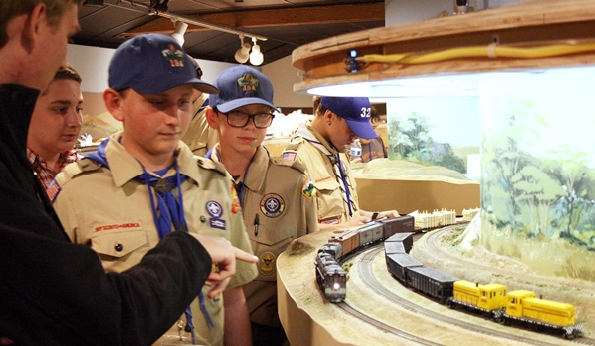
Scout Troop Visits
‘Open House for Scouts’ are planned to introduce local Scout Groups to model railroading. Run trains and have fun!
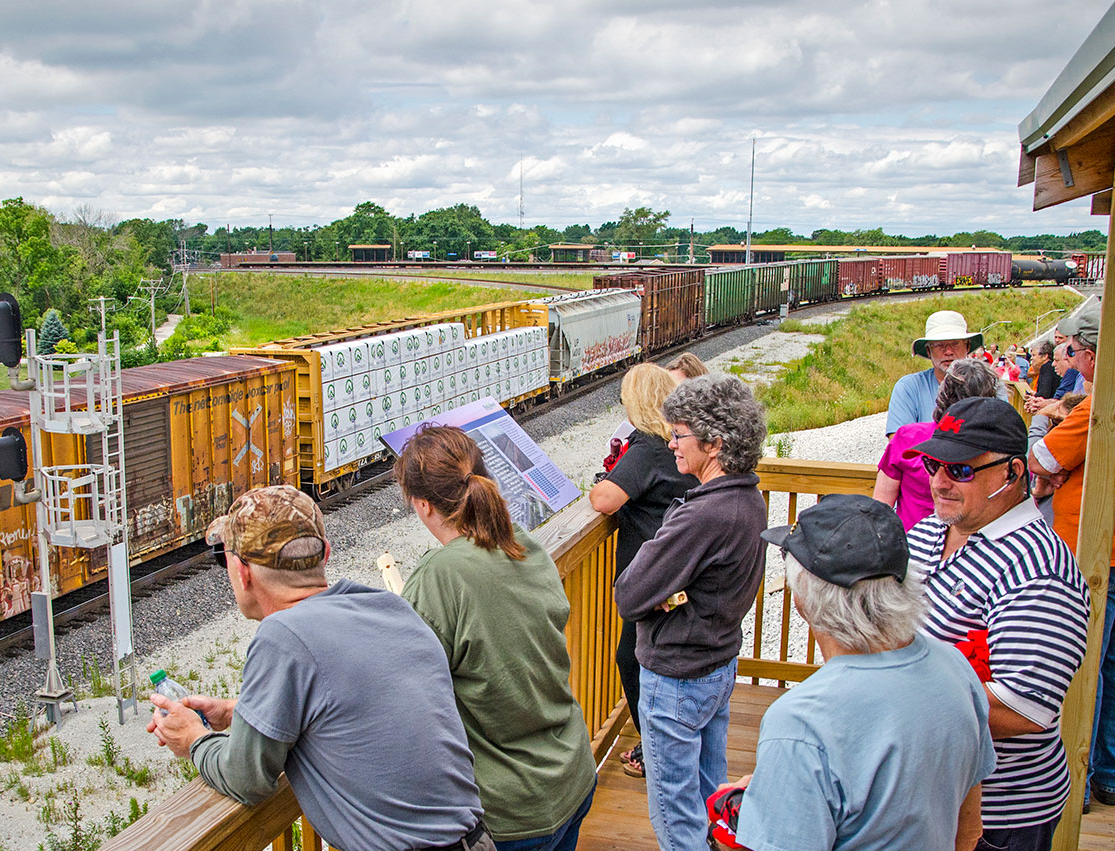
Rail Fan Trips
Rail Fan trips to Cordell, GA. and other ‘Hot Spots’ are part of our future plans. There’s nothing like ‘The Real Thing!’
LATEST NEWS
Upcoming Events in Our Area
North Central Florida and the surrounding areas are a great place to be for model railroading. Check back often to see where you can travel to meet model railroad enthusiasts and learn more about …. “The World’s Greatest Hobby!”
contact information
Fill out our contact form for more information and we’ll get back to you as soon as possible!
13201 Rachael Blvd.,
Suite SW-12
Alachua, FL 32615
352-871-4973
